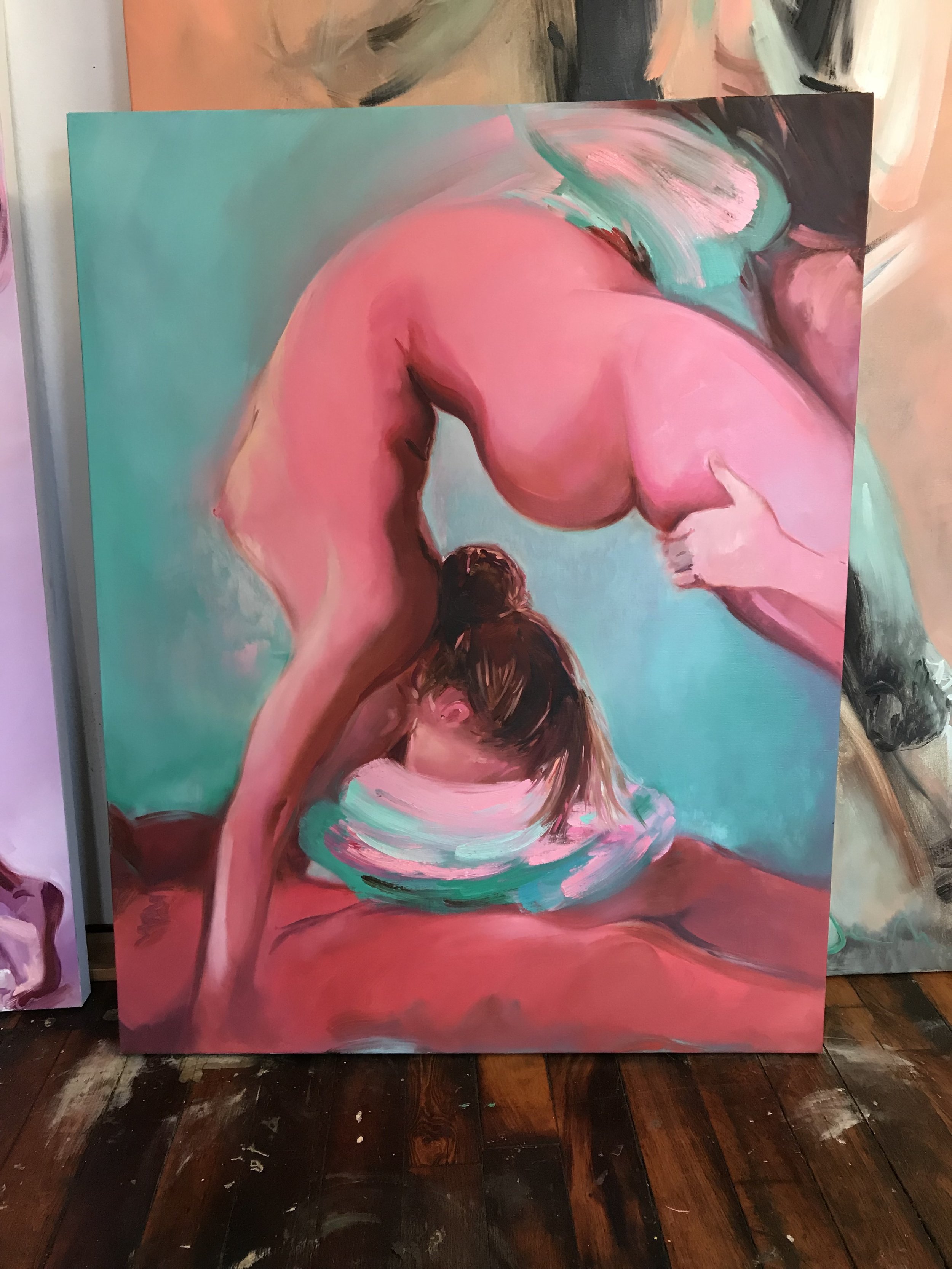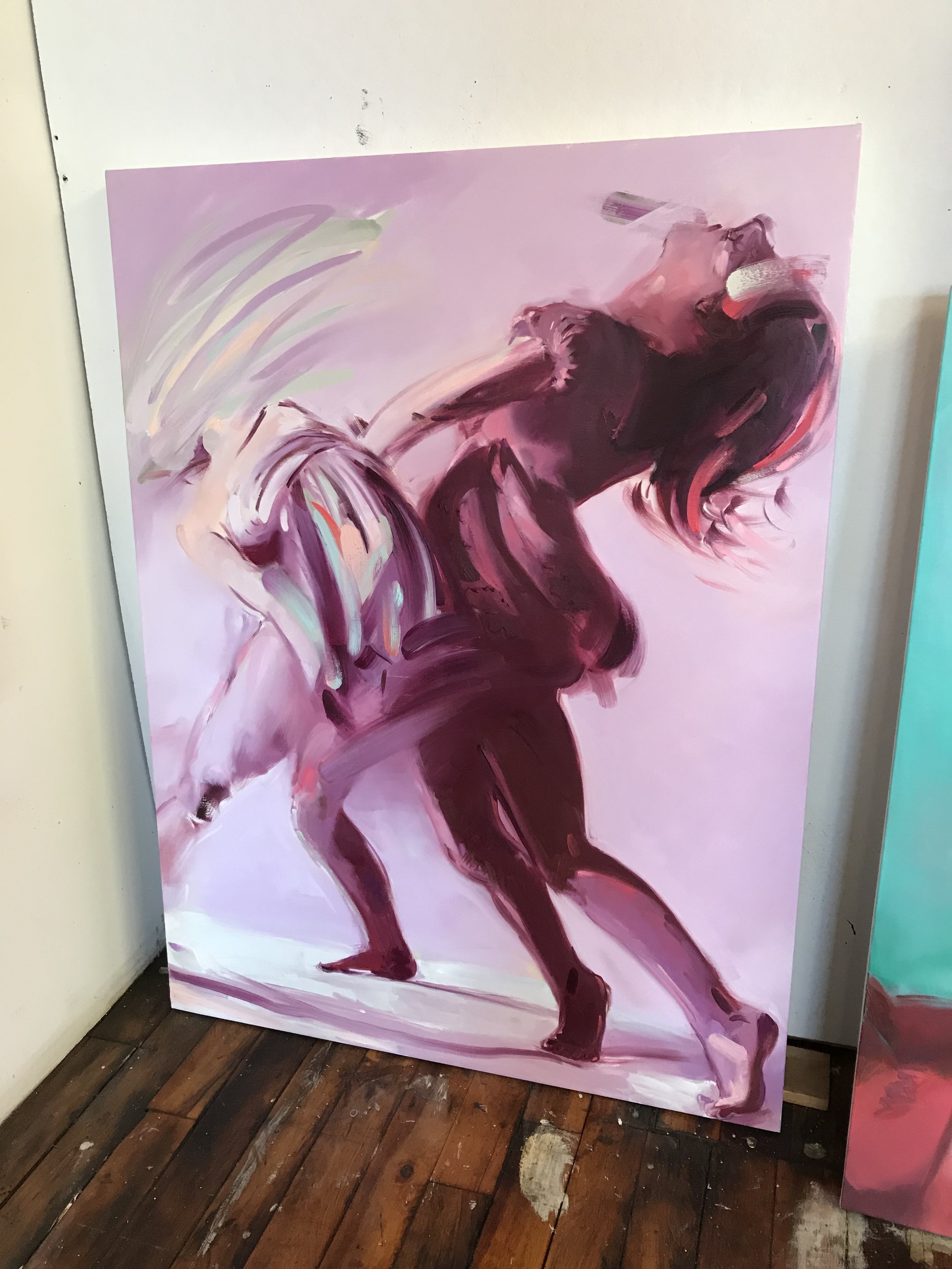Cassandra C. Jones created a wall-specific installation on view at Abigail Ogilvy Gallery from May 3 – June 16, 2019. The title of the entire work is “Forever Temporary,” which includes a wallpaper installation and nine digital prints. While the bright colors bring you in, the work has a much deeper significance. Read more about the work from Jones’ point of view below.
Cassandra C. Jones in front of her installation, Forever Temporary. Photo by: David Guerra
From the artist:
In 2017, a massive wildfire swept through the small desert town of Ojai, CA. It consumed over 500 homes on the very first night and raged for over a month. And while our home remained safe, the air around it became toxic and uninhabitable for many weeks.
All the modern day conveniences, and synthetics of our time, in all those houses, melted. They turned to acidic embers, bad gases, and nano-plastics, and then they rose up into the air, swirling in great plumes. When they reached as high as they could go up in the atmosphere they gently floated down, onto our landscape, as the softest and smallest of relics.
I still struggle to describe the way the mountains that surround our home looked covered in a blanket of ash, knowing it harbored a legacy, of all the pretty things our townspeople bought and considered either temporary or treasures in their lives. And even though the fire reduced their effects to the tiniest of fragments, many will still be here for hundreds, if not thousands of years.
detail of Golden Torch, Archival inkjet on cotton rag pearl, 30 x 18 in. Photo by Chris Anderson / CDA Media
When the rains finally came, the tiny shoots of new plants coming up through the charred black earth looked like green lace covering the valley. And the locals say that all the vegetation this year, in 2019, is more beautiful because the ash has finally seeped in and fertilized the soil. A super bloom of color; flowers and succulents, cactus and perennials blanket the terrain. It's just like the smog that makes the sunsets more beautiful; it is so vibrant yet still spoiled.
I think about the fresh new wild cactus in the mountains, just coming out of the ground, slow-growing vegetation that will likely still be around when my children have grandchildren. I imagine them absorbing and curling their watery flesh and spines around all those pernicious particles, like tree limbs sometimes wrap themselves around telephone wires. All the sinister little-bits are part of them now. For better or worse, those cactus will never know life without them.
The beach ball is an object that I chose to represents the ordinary disposable possessions in our lives. It is pretty, shiny, and fun, much like new technologies, beauty products, food packaging, synthetic clothes, etc., And like all those things it is short-lived and replaceable. In whatever way our creations of this caliber are disposed of or destroyed, recycled or reused, the human-made ingredients that go into them are becoming part of our natural world, creating shifting waters, altered landscapes, and new gardens that are forever and temporary all at once.
Photo by Chris Anderson / CDA Media




